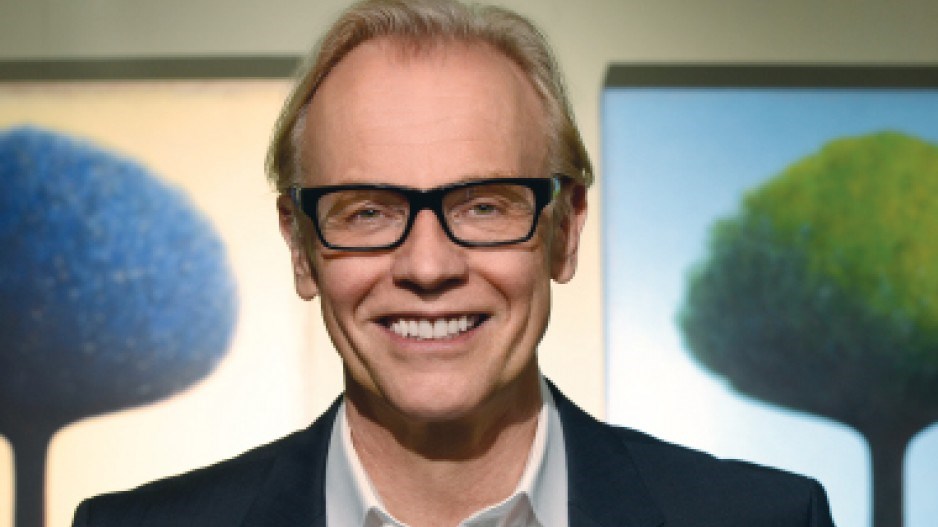For someone who recently announced more than US$50 million in follow-on financing from global players like General Electric (NYSE:GE) for companies in his portfolio, Wal van Lierop, Chrysalix Energy Venture Capital CEO, sounds a bit pessimistic about B.C.’s prospects for becoming a global player in clean technology.
But that’s only because he fears a dearth of venture capital will limit B.C. to being a perennial incubator of startups with long odds against maturing into large or mid-sized companies.
A venture capitalist who invests exclusively in clean tech and clean energy, van Lierop thinks B.C. has great potential, especially in engineering innovation in Western Canada’s mining, oil and gas industries.
MineSense Technologies Ltd., for example, one of the companies in Chrysalix’s portfolio, is commercializing technology that increases efficiencies in mining. It’s one of four companies Vancouver-based Chrysalix has invested in recently to receive follow-on financing.
“We have an enormous niche for sustainable innovation,” van Lierop said. “And if we would play our cards well, as a country, we could achieve two things. One is with sustainable technology [that] could probably maximize the value of all the assets we have in our resource industries.
“The other objective – if we play our cards well – we would develop a tech community that really is focused on that.”
Chrysalix’s flagship investment is General Fusion, which is developing technology to generate clean fusion energy from sea water and lithium, both of which are abundant.
The company has raised $100 million in venture capital to date and has a head count of 60. It recently concluded a US$22 million round led by the Malaysian government.
It’s not companies like General Fusion that van Lierop worries about.
“It’s that whole category that scores a B-plus to A-minus that we also have to pull into the direction of an A-plus.”
Two other companies in Chrysalix’s portfolio have also received portions of follow-on financing recently. Enbala Power Networks Inc. raised US$11 million and GaN Systems Inc. raised US$20 million.
Enbala is headquartered in Toronto, but 90% of its workforce is in North Vancouver, where the company does its research and development. It’s building what van Lierop calls “the Internet of the grid” – a system for managing a distributed power grid that is still evolving.
GE Ventures and Edison Energy, a subsidiary of Edison International (NYSE:EIX), were the leads in the latest financing round.
There is no lack of support for early-stage tech companies in B.C. Van Lierop said there are an estimated 9,000 small technology companies in B.C., many of them supported by accelerators, incubators and government grants.
“There’s a whole industry to keep them alive,” van Lierop said of B.C.’s startup community. “As a [venture capitalist], I know that probably 8,000 of these 9,000 will never make it.
“We need to ensure there is more money that can help companies that have a lot of potential and have been around for a few years to really grow to the next level of revenues.”
Ottawa has acknowledged the problem with the creation of the Venture Capital Action Plan (VCAP) in 2013. It provided $400 million to establish four new private-sector-led funds.
The governments of Ontario and Quebec kicked in $38.75 million and $46.5 million, respectively. The new Northleaf Venture Catalyst Fund in Ontario consequently leveraged $156 million in new private venture capital, and Teralys Capital Innovation Fund in Quebec raised $186 million.
“Hardly any of that money is poised to reach B.C. because our government and our pension funds do not play in this area,” van Lierop said. “Many people made huge pleas to the B.C. government last year to put in some matching money to this federal initiative to ensure that we would get a local office of one of the VCAP funds, but that didn’t materialize.”
However, just because three of the funds are based in Eastern Canada (four, if you count Boston-based HarbourVest Partners, which has opened an office in Toronto), that doesn’t mean B.C. companies won’t be considered for financing, said Jérôme Nycz, executive vice-president of BDC Capital, the venture arm of the Business Development Bank of Canada.
“There is no geographic restriction in the design of the VCAP program,” Nycz said.
That said, of the 30 companies to be approved for venture capital financing to date, only one is in B.C., Nycz confirmed – a life sciences company.
Both life sciences and clean tech are capital-intensive and have long development horizons. That means they need venture capitalists with deep pockets and a lot of patience.
“There are very, very few funds in Canada that can lead a financing for mid-late stage companies,” said Michael Delage, General Fusion’s vice-president of technology and corporate strategy. “We have a lot of great entrepreneurs and smaller companies, but not nearly as many that scale into the 100 [-plus] employees.
However, he said Canada’s venture capital problem won’t be solved simply through governments “writing cheques.”
“More capital is required, but most important is for the federal and provincial governments to work together to find ways to make Canadian companies more competitive and improve the number of big wins in the sector.”




